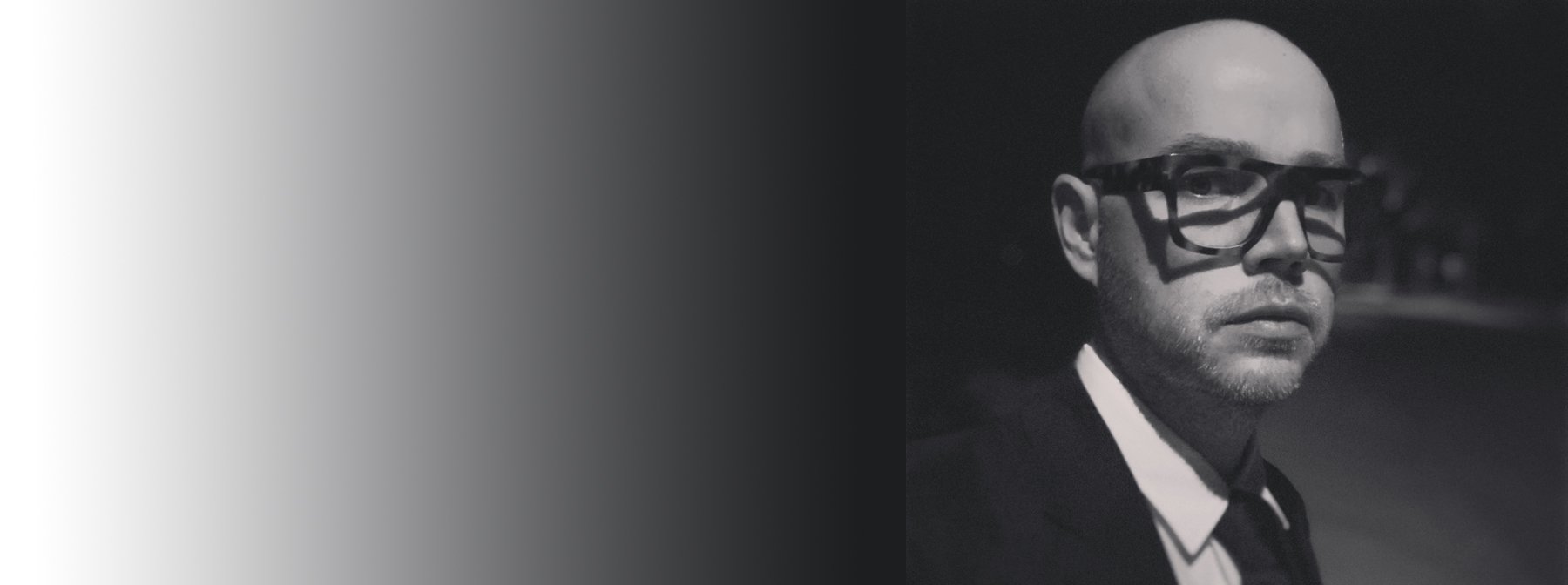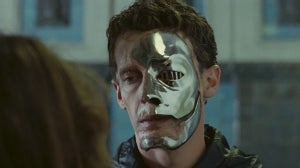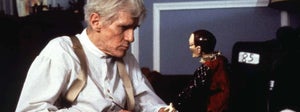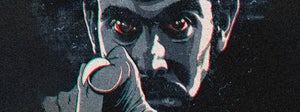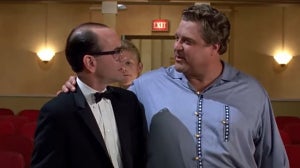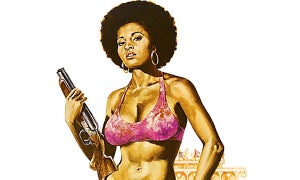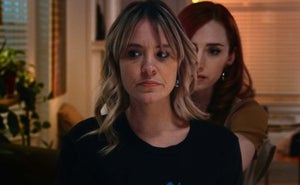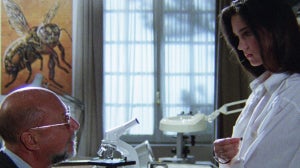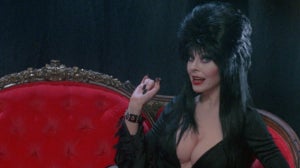
A self-confessed introvert, Anthony Scott Burns’ creative journey is one that defines independent filmmaking. His second film, Come True (2020) ― which he considers his first official feature ― was helmed by a skeleton crew; Burns having not only written, directed and edited the film but also handled the cinematography and visual effects… while collaborating with Electric Youth on the soundtrack under his pseudonym Pilotpriest. Despite his free-associative approach, this indie auteur articulates the realms of cinema as though waking up from inside a movie itself, emphasising that internalised Canadian spirit. He now aims to find interesting ways to engage with Hollywood ― currently developing a project with Gale Anne Hurd ― hoping to bring a larger scope while retaining that “weird cult heart”. In conversation, Burns shares his appreciation for those films that fall outside of the mainstream along with his unique approach to filmmaking.
As a filmmaker what is cult cinema to you?
It’s funny, many years ago I was someone who was trying to champion cult channels and streaming. I was reached out to by a cable provider in my twenties because I was someone who was running around town with the old video handbooks shouting, “People need to see this movie!” screening to anyone who would listen and screen for anybody who would watch. So, obviously, for me, cult cinema is drastically important because it is the voice of the underground.
You specifically refer to the films on your ARROW Selects as ‘dangerous’. Can you elaborate further?
I put ‘dangerous’, but they’re not dangerous ideas, they’re just outsider ideas we can explore. On first viewing, almost all of the movies that I singled out, made me feel either sick, scared, lost, or somehow question my own existence. I felt uneasy and unsafe watching them because anything could happen, and this was their draw. As we know, filmmaking feels like a (dying) business and therefore people are being more cautious. But these outsider and underground ideas can be explored in cult cinema in ways that are not allowed in the mainstream because it’s often about things bubbling under the surface that people haven’t realised are there yet. So cult cinema almost feels like time travelling. You see where people’s heads are at in the underground through this outsider perspective, so as an artist you look to where things are headed.
Therefore, such films become more and more relevant over time ― ARROW and other boutique labels ultimately becoming more and more about their curation?
It’s started coming back in a big way because of backlash against the cancellation of so many television series. People are becoming wiser about this now and so (hopefully) seek more focused content from physical media and their own streaming services.
https://www.youtube.com/watch?v=e_ROA_ZEGfA&pp=ygUXdGhlIHN0dWZmIHRyYWlsZXIgYXJyb3c%3D
Looking at your own film Come True, this was such an immersive experience from the offset and the perfect synthesis of sound and image. Where did you start in approaching the dream state ― via the music, the story, or does it just work both ways for you?
Very much so, even right down to the way that we shot the film, as I don’t tend to storyboard. Not because I don’t want to, I just find it allows actors to play out the dialogue and then finding the shots afterwards is just much more intuitive and allows for a lot more happy accidents to happen. A lot of things are pointing to this in the art world where people are starting to realise that if you just allow yourself to be a conduit to what’s flowing through you, things come out a lot more honestly than if you’re trying to mould them into something; especially on the budgets that we’re dealing with.
Very pure, like abstract art…
That’s how I use technology. People always ask why I have such small crews on my films, and it’s not because I don’t like to work with people, it’s because I like to hold the paintbrush. If it is a painting, I like to be the painter… not having to tell someone else where to put the brushstrokes. That doesn’t make sense to me in the modern age because we have so many resources that can help the artist translate… and now with artificial intelligence, even more so.
Most importantly, that it remains true to your vision.
But, at the same time, if you have great collaborators, then they can only make it bigger, better and bolder. But the best people cost money and so I always bring it back to this: if you want to make wild and crazy movies like the ones in the ARROW library, oftentimes you’re asked to do it for a lot less money so, for me, if I want a certain kind of thing. I can’t afford those craftspeople to pull it off and so I have to figure out new and exciting ways to do that.
There seem to be seeds and tracings of some of the films on your ARROW list in your own work. How ‘conscious’ is this?
They’re translations. I used to say that even if you point to David Lynch’s films he’s ‘translating’ Hitchcock into his artwork. For example, even though Twin Peaks takes place in the ’80s, the characters are all dressed like they’re in the ’50s, listening to music from that era.
It’s displaced… again, an abstraction.
Yeah. You see that timelessness in his work as well. This is the particular brand of filmmaking I enjoy while exploring my own psyche and hopefully finding others on planet Earth who have similar feelings and predilections that will connect to the artwork. But really, that’s all it is; I’m translating ideas, moods and emotions to try and create something new. I’m taking ingredients… and I’m cooking.
We have had a wonderful resurgence of scores, specifically the synthwave scores (post-Drive) that delivered a fresh buzz for the relationship between the music and the film. They have a life of their own. Even though you work more loosely, were there ever similar intentions?
I talk a lot about this ― that in Hollywood there are two missing components in modern films ― and I would argue that the reason movies like Guardians of the Galaxy hit so hard (for mass appeal) is because of the needle drops. So when those songs come on, it doesn’t matter if you’re young or old, they’re so good and so much fun that you can’t help but smile and enjoy yourself. But there was a time for me growing up that movie soundtracks were like an important part of the puzzle, whether it’s Pulp Fiction or even Batman Forever, it didn’t matter, the soundtrack meant something and that went away. You remember (and whistle) the Indiana Jones theme, so I’d argue the music is 80% of the experience. It imprints. A good score can transform a mediocre movie into something great ― keeping it alive after leaving the theatre ― but a bad score can take an amazing movie and destroy it.
Seeing Donnie Darko on your list, it feels like the perfect double bill with Come True.
That was the theatrical by the way; a movie that understood the needle drop. The songs were so perfect as they were.
https://www.youtube.com/watch?v=bKQ2wggG-C4&pp=ygUaZG9ubmllIGRhcmtvIHRyYWlsZXIgYXJyb3c%3D
If you were to choose one film as an entry point to your list, which would it be?
Honestly, I would say the easiest one for people to enter the world of cult movies is Donnie Darko, just because it is so traditional in its execution and ― in the same way I tried to do with Come True ― the entry point is that it looks like a Hollywood film… and yet the things that happen in it are so not Hollywood. And that’s the key to the missing ‘cult ingredient’; is that sometimes a cult film can feel very cheap because of the budget, but because Richard Kelly’s film had Drew Barrymore sort of talking it up with her production company, and at the time we had we had a captive audience who bought home video and went to the theatres, you could take these risks. Kiyoshi Kurosawa’s Pulse is another good place to start too, which is a masterwork in tone.
You appreciate Jodorowsky and De Palma too. Two very different directors, but what is it about these filmmakers in particular that stand out to you?
Both have spoken about cowardice as an artist. You look at Body Double, for instance, and no matter how lurid or sleazy moments are De Palma sticks to what the character would do. That can be hard for people to take. So, if you’re translating ’80s movies, male protagonists were often stalkers; this warped desire to be close to people. But as a filmmaker, you’re exploring what it is to be a human being (for better or worse) when you’re making movies.
If not, what are you really looking at, what is the point of the film?
It comes back to the ‘dangerous’ conversation. Cult movies often feel dangerous in that they almost feel like a) anything can happen and b) because you know these things weren’t typically made by committee by a studio, you feel like even making the movie itself translates to something that is visceral when you’re watching it. There’s a cult Canadian film called Dragon Hunt. The filmmakers couldn’t afford squibs so they hired a sharpshooter to fire bullets into the sand as the actors ran by. Which is insanity. But that’s independent filmmaking. The same when I watch the original Mad Max; I cannot believe what I’m seeing in those over-the-shoulder shots with a speedometer at levels that you should never be at. All of this is obviously a really big missing ingredient in modern cinema because it is very hard to get people to pay money for people to take such insane risks.
What are your thoughts on the appreciation for such films?
I think what’s slowly being realised is that the people who are here for film ― those here to celebrate cinema ― are the people who want new and exciting things. ARROW is proof in the pudding.
See Anthony’s full list of picks in Anthony Scott Burns Selects on ARROW. Come True is available on Blu-ray. Stay updated via Twitter @realpilotpriest.

